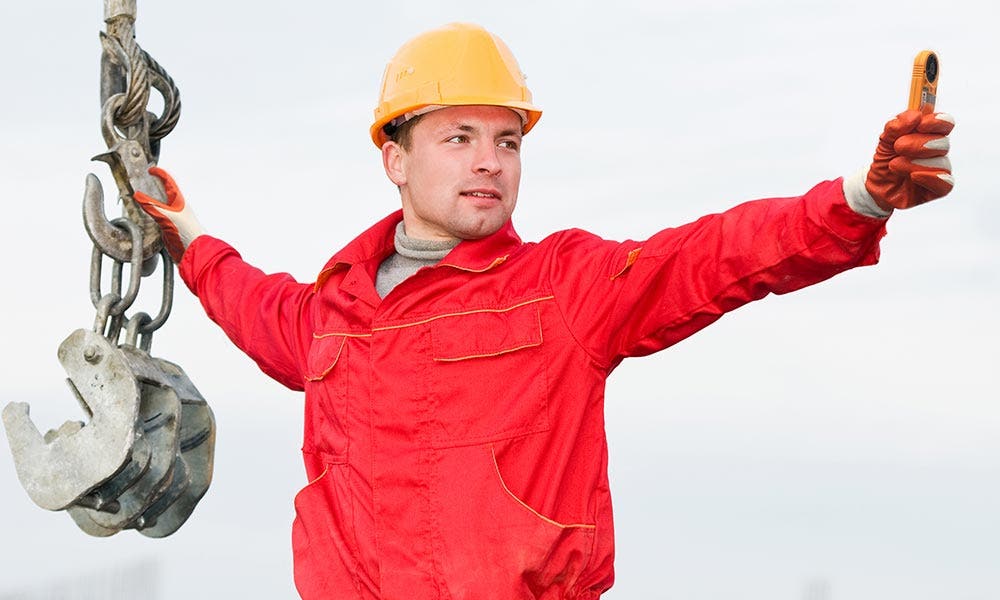Keep Your Workers Safe With Kestrel Instruments

Construction workers brave many hazards. Working with heavy equipment, at various heights, and in dangerous environmental conditions cause injuries consistently. In 2017, a total of 259 on-the-job deaths were reported – or 14.1 deaths per 100,000 full-time construction workers. Also that year, 21,760 nonfatal injuries were reported.
Sadly, many of those injuries could have been prevented. A commitment to safety best practices can protect workers, including monitoring the environment. High winds and heat take a toll on workers, creating unsafe conditions. Mitigating the effects of weather on crew members will protect them and make injuries less likely.
Hazards of High Winds
Strong or high winds present a variety of hazards to construction workers. Possible scenarios include:
- Objects falling from heights
- Eye injuries from dust and debris
- Dropped loads during a lift in high winds
- Workers being struck by objects blown in wind
- Falls from scaffolding and other heights
- Unforeseen movement from overhead powerlines
The Occupational Safety and Health Administration (OSHA) normally defines high winds as the following:
A wind of such velocity that one or more of the following hazards would be present:
- The wind could blow an employee from an elevated location,
- The wind could cause an employee or equipment handling material to lose control of the material, or
- The wind would expose an employee to other hazards not controlled by the standard involved.
Normally, OSHA's standard for a high winds are "winds exceeding 64.4 kilometers per hour (40 miles per hour), or 48.3 kilometers per hour (30 miles per hour) if the work involves material handling."
The Kestrel 1000 Wind Meter and Kestrel 2000 Wind & Temperature Meter can help supervisors analyze if wind conditions present a safety hazard, if the hazard can be mitigated by windshields, or if the work needs to be abandoned until conditions have become safe. These instruments measure the speed of wind on-site and is more accurate than using a smartphone app, which usually takes data from weather stations that could be miles away and experiencing different wind conditions.
The devices are easy to use, requiring operators only to hold the instrument up to the wind for 30 seconds to receive accurate data with their sensitive impeller technology. They record current, average, and maximum wind speed.
Strong or high winds can be especially dangerous for workers performing tasks off the ground. Scaffolding safety is particularly important. Winds can blow materials on scaffolds around, causing unsafe conditions or can even cause workers to fall. Falls are among the top causes of injury for construction workers.
OSHA prohibits work on scaffolds "unless a competent person has determined that it is safe for employees to be on the scaffold and those employees are protected by a personal fall arrest system or windscreens. Windscreens shall not be used unless the scaffold is secured against the anticipated wind forces imposed."
Kestrel instruments can help supervisors to know when it is time to use a windscreen.
The convenient data logging feature of Kestrel DROP Data Loggers can also offer useful evidence in the case of litigation. The data logs can be accessed from smart devices via Bluetooth or from a computer. The Kestrel LiNK app gives users the ability to see data in real-time, set up threshold alerts, and view charts. Data can be easily sent through email or even social media.
Hazards from Excessive Heat
Summertime means there is plenty of daylight for construction. Unfortunately, that summer sun comes with hazards of its own to workers. Powerful rays from the sun can cause heat-related illnesses, especially if workers are not yet acclimatized to it.
In fact, 50 to 70 percent of outdoor fatalities "occur in the first few days of working in warm or hot environments because the body needs to build a tolerance to the heat gradually over time," according to OSHA's "Working in Outdoor and Indoor Heat Environments" article.
Heat stress occurs when the body's ability to control its internal temperature becomes disabled. At that point, workers can experience various symptoms, such as lethargy, feeling faint, excess sweating, muscle cramps, pale skin, tiredness, and dizziness.
One way to prevent illness and injury from heat stress is by using the Kestrel 5400 Pro Heat Stress Tracker and the Kestrel DROP D2HS Heat Stress Monitor and Data Logger. These instruments can measure environmental factors that increase the chance of heat stress, including temperature, humidity, and radiant heat.
The data comes in handy to help supervisors make decisions to protect their workers, especially as they become acclimated to warm or hot conditions. OSHA recommends that during the first few days of work in the heat, employers should encourage that workers do the following:
- Consume adequate liquids (water and sports drinks)
- Work shorter shifts
- Take frequent breaks
- Quickly identify any heat illness symptom.
Supervisors might use the instruments to help them know when to take breaks away from heat sources or to schedule shifts during cooler parts of the day.
Supervisors and workers need to be aware of symptoms of heat stress and what to do when a heat-related illness may be occurring. To prevent and treat heat stress, workers should drink water, rest, and stay in the shade.
Data from Kestrel instruments, not only help supervisors to prevent heat-related illness but can also be used in cases of litigation.
The primary goal of construction management should be to protect their workers while doing the work well. Kestrel instruments and data logging can aide supervisors and management in reaching that goal.









